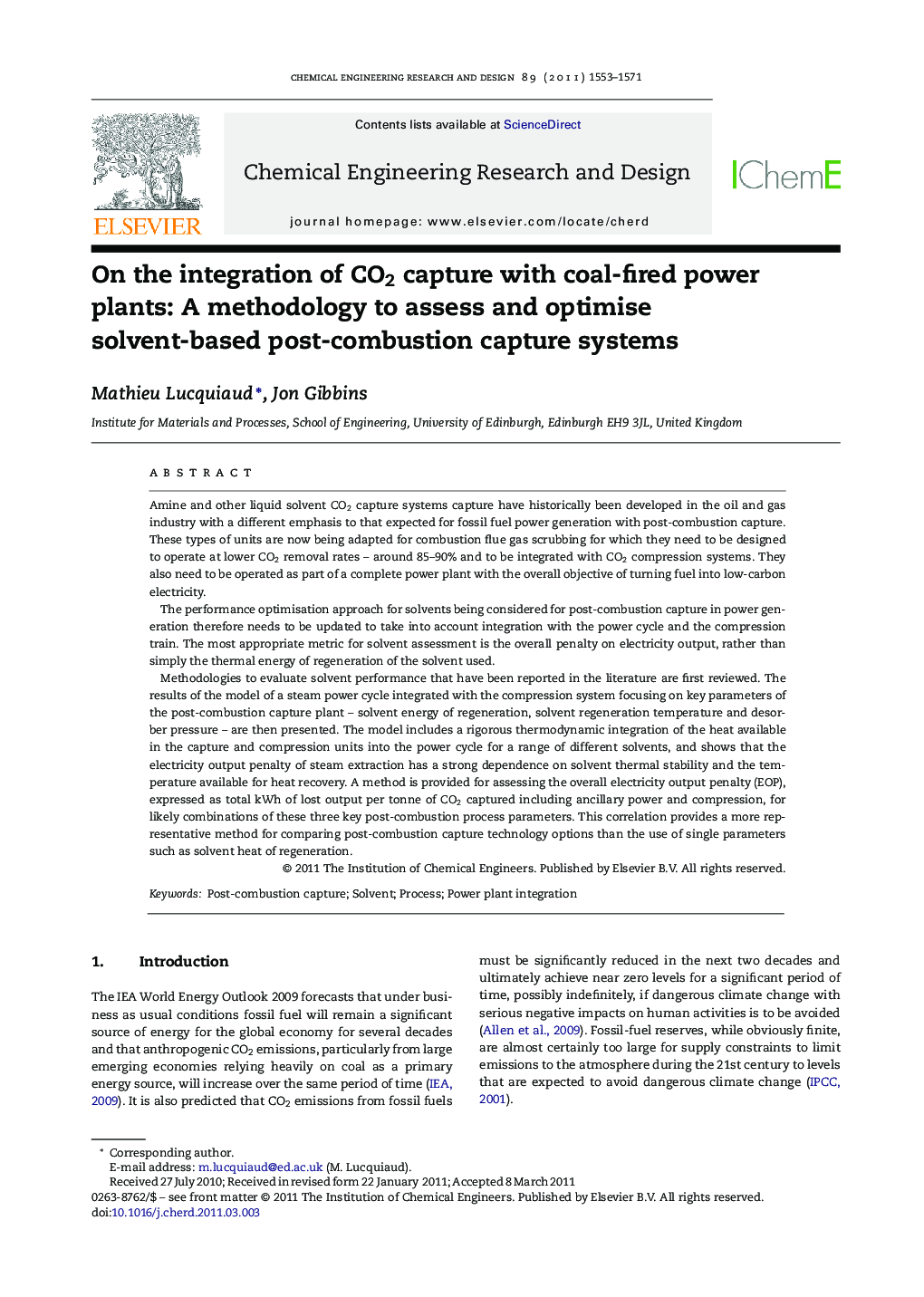| Article ID | Journal | Published Year | Pages | File Type |
|---|---|---|---|---|
| 622040 | Chemical Engineering Research and Design | 2011 | 19 Pages |
Amine and other liquid solvent CO2 capture systems capture have historically been developed in the oil and gas industry with a different emphasis to that expected for fossil fuel power generation with post-combustion capture. These types of units are now being adapted for combustion flue gas scrubbing for which they need to be designed to operate at lower CO2 removal rates – around 85–90% and to be integrated with CO2 compression systems. They also need to be operated as part of a complete power plant with the overall objective of turning fuel into low-carbon electricity.The performance optimisation approach for solvents being considered for post-combustion capture in power generation therefore needs to be updated to take into account integration with the power cycle and the compression train. The most appropriate metric for solvent assessment is the overall penalty on electricity output, rather than simply the thermal energy of regeneration of the solvent used.Methodologies to evaluate solvent performance that have been reported in the literature are first reviewed. The results of the model of a steam power cycle integrated with the compression system focusing on key parameters of the post-combustion capture plant – solvent energy of regeneration, solvent regeneration temperature and desorber pressure – are then presented. The model includes a rigorous thermodynamic integration of the heat available in the capture and compression units into the power cycle for a range of different solvents, and shows that the electricity output penalty of steam extraction has a strong dependence on solvent thermal stability and the temperature available for heat recovery. A method is provided for assessing the overall electricity output penalty (EOP), expressed as total kWh of lost output per tonne of CO2 captured including ancillary power and compression, for likely combinations of these three key post-combustion process parameters. This correlation provides a more representative method for comparing post-combustion capture technology options than the use of single parameters such as solvent heat of regeneration.
► Review of integration of post-combustion CO2 capture into coal-fired power stations. ► Integrated steam cycle, amine and compression process model. ► Identification of key process parameters. ► Evaluation and performance optimisation of solvent-based CO2 capture.
